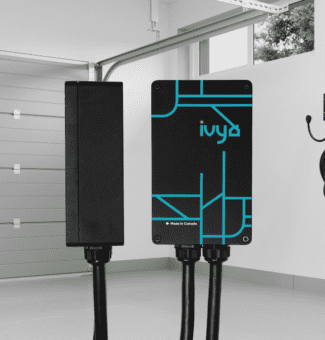Listen to this blog.
There’s a special kind of pride in getting handy around the house: picking up a tool, finally starting a project you’ve been meaning to do for years, and seeing the immediate payoff in your daily life. Perhaps it’s the satisfaction of watching your work take shape or the sense of accomplishment after doing something you would usually call a professional. Whichever it is, and whether you call them lifehacks or investments, most of us can’t resist the urge to improve our homes to suit our needs better. Making your everyday spaces more efficient is an excellent way to feel even more at home.
According to Businessdasher, consumer purchasing habits indicate a shift towards sustainability. People are seeking minimal packaging and a real commitment from their favourite brands to stay accountable and sustainable. We can maintain the same standard by keeping our homes and daily activities cleaner and more efficient. In this article, we’ll explore five sustainable home improvements that can help create an eco-friendly home while reducing costs and waste. Don’t worry, you don’t have to go full Solarpunk—though wouldn’t that be nice?
The benefits of living sustainably.
Living sustainably may take effort, but it is filled with advantages. It can help you reduce costs, as you only use exactly what you need, minimizing waste. Your property value can increase as a resource-rich, independent home is more appealing to potential buyers. It can improve your health, too, as you reap the benefits of natural light and cleaner water and air. Moreover, if the benefits to the environment aren’t at the top of your list, a more sustainable home is a more affordable home, cutting your monthly energy bills and saving you money in the long run.
Now that we’re excited about the subject, let’s dig in!
1. Energy efficient living.
We’re always using energy—from lighting our homes and powering our devices to keeping temperatures comfortable. Reducing our energy use can lessen our dependence on power companies without sacrificing the things we love. Here are a few ways to become more energy-efficient:
- Insulate your home and HVAC system. Protect ducts and appliances, seal leaks around doors and windows, and prevent energy loss.

- Install a smart thermostat. Optimize energy usage by running your HVAC system only when necessary.
- Switch to renewable energy for homes. This is a game-changer for both cost savings and sustainability. Consider solar panels or home wind turbines to reduce reliance on traditional energy sources. This investment may be a bit large, but you can start by hooking up your water heating system to an alternative source and take it from there!
2. Water conservation tips for a sustainable home.
We can’t live without water, but we can certainly use it more wisely. Here’s how:
- Collect and use rainwater. While it may not be ideal to drink, rainwater can be used to water gardens and indoor plants, clean our homes, and perform other non-consumption tasks.

- Smart landscaping. Opt for native plants, as they would naturally thrive in your region, reducing the need for excess watering. Even with those plants that need more water, you can set up a smart irrigation system based on your lawn’s needs.
- Watch for leaks. Fixes are essential here, too. Stopping leaks can improve your water system and overall pressure, lower water bills, and reduce wasted water. You can also make some changes to your everyday plumbing by installing dual-flush toilets, which can help you control how much water is used to flush liquid and solid waste.
3. Zero-waste household: Smart waste management.
Every household produces waste, but you can take steps to minimize it:
- Upcycling and repair. Not everything needs to be tossed out. Look into ways of giving new life to broken items or fixing them up. For all you know, what you thought was trash might actually be a stylish solution you hadn’t thought of.
- Try to go zero-waste. Compost your organic waste and look for minimal packaging in your daily needs!
- Find a recycling spot. For all you know, there’s one closer than you think. Some places even offer compensation for recyclable materials.
4. Improve air quality and natural light at home.
This one is probably more fitting for home builders and people looking to invest in renovations.
- Let fresh air in. Proper ventilation and natural lighting can transform your home’s air quality, making it a healthier space. This can significantly reduce moisture buildup and keep your home fresh during the warmer months without expecting so much from your HVAC system.
- Natural lighting. When done right, strategically placed windows can improve your home’s natural lighting, reducing the reliance on electricity during the day.

5. Eco-friendly transportation options.
A few changes in daily home practices can also improve your daily life outside of the home.
- Active transportation. For one, you can set up reliable and safe bicycle storage that encourages cycling more often instead of driving.
- Go EV friendly. A change to electric vehicles may also be a good bet. More than the vehicle itself, however, you can prepare your home to charge your EV using its excellent energy setup to start every journey with a full battery. Home EV chargers have evolved to be capable of charging with a 240V system and can be properly scheduled to your ideal charging times. Smart chargers can also be controlled remotely, which improves your charging experience overall.
Closing thoughts.
There are many ways to improve our homes as living ecosystems. Perhaps the most inspiring aspect of these options is that even the most minor action can have an excellent impact. Some sustainable lifestyle choices are so easy to implement that they can be your first step toward an eco-friendly home.
Click here to read through our blogs and find new ways to make your everyday life smarter and cleaner.
Join our electric community.
Be the first to hear about Ivy tips, promotions, and network updates.





























